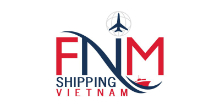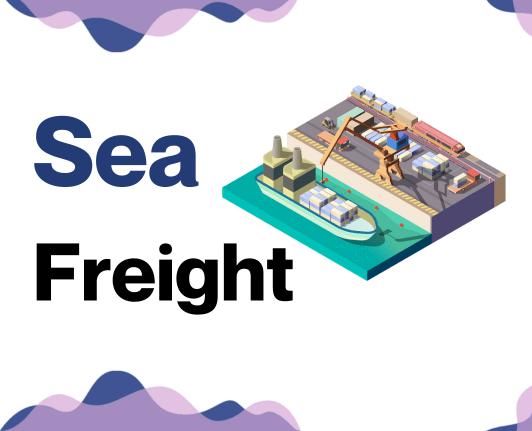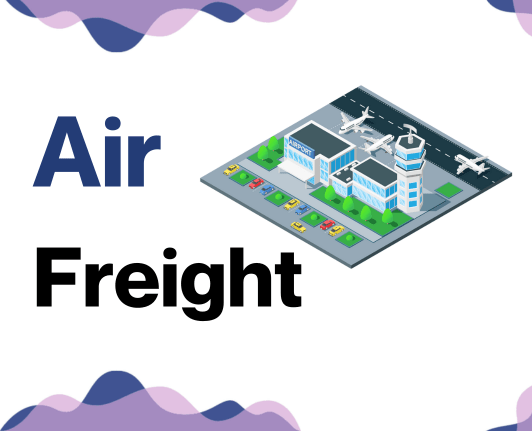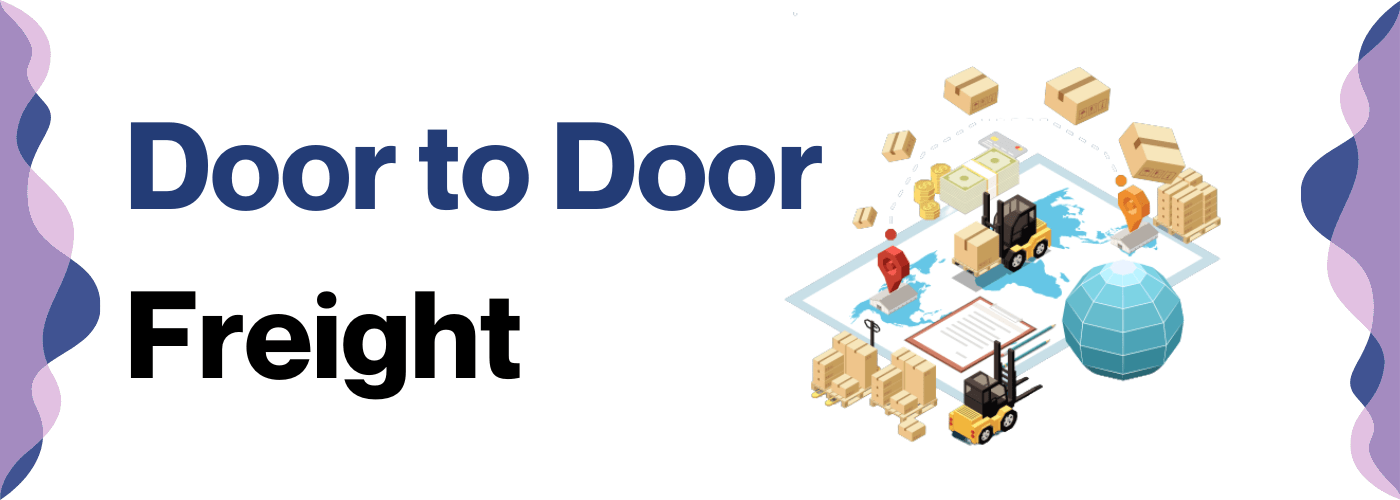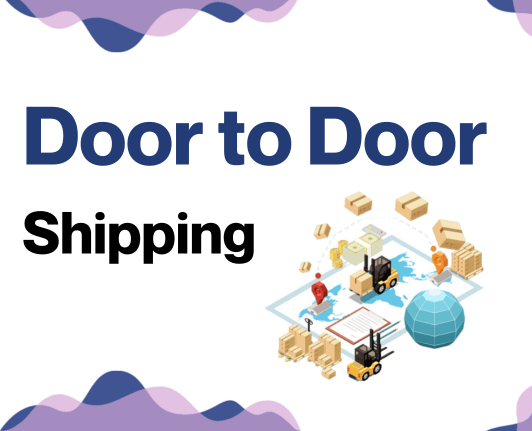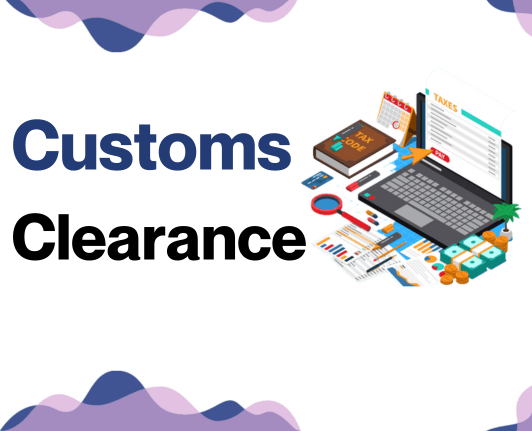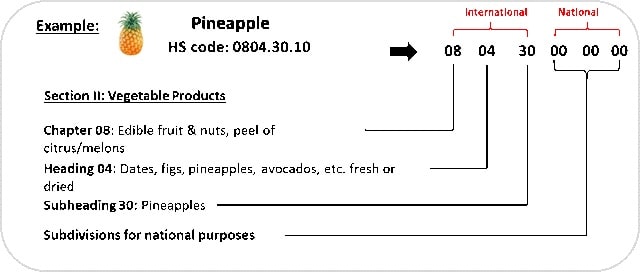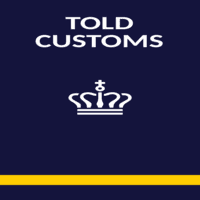Trying to figure out international freight between Vietnam and Denmark feels a bit like playing hide and sneak with a cargo ship, doesn't it?
Dealing with fluctuating rates, variable transit times, and complex customs regulations can be enough to make your head spin.
Fortunately, this guide has been designed to tackle these challenges head-on, providing you with in-depth insights into different freight options, deciphering customs procedures, and decoding duties and taxes. This guide is your map to successful trade between these two bustling economies, offering expert advice tailored specially to businesses.
If the process still feels overwhelming, let FNM Vietnam handle it for you! As a renowned international freight forwarder, we master every step of your navigational journey, transforming shipping obstacles into success stories.
Summary
Which are the different modes of transportation between Vietnam and Denmark?
Transporting goods between far-off nations like Vietnam and Denmark can feel like a tricky puzzle due to the long journey and multiple international boundaries.
We've got two main pieces to this puzzle - air and sea. Picture airplanes and cargo ships ready to undertake your freight mission. Now, imagine picking the most practical piece that fits your business's unique shipping needs. It's like picking the fastest or the most cost-effective racehorse.
This piece will help you analyze your shipping route, guiding you like a compass to choose the best transport mode for your business's winning race across the globe.
How can FNM Vietnam help?
With FNM Vietnam, shipping goods between Vietnam and Denmark is simplified. Trust our expertise for a smooth journey, no matter the cargo. This includes air, sea, road and rail transport, plus customs clearance and administrative procedures. Want to know more? Our consultants are just a phone call away. For a free estimate in under 24 hours, get in touch!
FNM Vietnam Tip: Sea freight might be the best solution for you if:
- You're moving big loads or large items. Sea freight offers roomy, cost-effective solutions.
- Your shipment isn't time-critical. Ocean routes take longer but are often more reliable.
- Your supply chain links major ports, tapping into a broad network of sea lanes.
Sea freight between Vietnam and Denmark
Trading between Vietnam and Denmark often involves a passage through the bustling ports of Ho Chi Minh City and Aarhus, a maritime link that has become crucial to their economies.
Transporting goods through the vast expanses of oceans might seem daunting, but sea freight has distinguished itself as a cost-efficient option, particularly for businesses dealing with bulky shipments. Imagine filling up a bathtub - it's slower than a shower, but it can hold a whole lot more.
But let's be honest, it's more complex than just loading containers and setting sail. Dealing with the labyrinth of customs regulations and procedures is where businesses often falter. Like a confusing puzzle, you might feel lost, making unintentional mistakes, and overlooking key details.
In the upcoming sections, we unravel this puzzle, providing you with practical know-hows and best practices to make your shipping journey as smooth as your morning coffee. Get ready for an ocean of insights, dear reader, as we dive deep into the specifics of ocean shipping from Vietnam to Denmark. Let's ensure your cargo sails smoothly and reaches its port of call on time!
Main shipping ports in Vietnam
Port of Hai Phong
Location and Volume: Located on the Cam River, near Vietnam's northern coast, Port of Hai Phong is critical for imports from Northeast Asia, with a shipping volume surpassing 8 million TEUs annually.
Key Trading Partners and Strategic Importance: Noteworthy trading partners include China, South Korea and Japan. The port serves as a major gateway, thanks to its proximity to Hanoi and the Northern key economic zone.
Context for Businesses: If you're planning to trade extensively with North Asia, especially China, the Port of Hai Phong, with its well-connected infrastructure, could be a crucial part of your logistics plan.
Port of Da Nang
Location and Volume: Positioned on the Han River on Vietnam's central coast, the Port of Da Nang's shipping volume is above 4 million TEUs regularly.
Key Trading Partners and Strategic Importance: The port primarily trades with countries in ASEAN and Northeast Asia. Da Nang holds a strategic location near the East-West Economic Corridor linking Myanmar, Thailand, Laos, and Vietnam.
Context for Businesses: For businesses aiming to tap into the ASEAN and Northeast Asian markets, the Port of Da Nang’s strategic location could be a key factor in streamlining your logistics.
Port of Ho Chi Minh City
Location and Volume: Situated in southern Vietnam along the Saigon River, the Port of Ho Chi Minh City is the country's largest port, with annual shipping volume exceeding 6 million TEUs.
Key Trading Partners and Strategic Importance: Major trading partners encompass regions like the US, Europe, and other ASEAN countries. The port is crucial for Vietnam’s integration in to the world economy due to its sizable capacity.
Context for Businesses: If you aim to ship large quantities of goods to global markets, the Port of Ho Chi Minh City's significant capacity is worth consideration in your shipping strategy.
Port of Quy Nhon
Location and Volume: The Port of Quy Nhon lies on the eastern coast of Vietnam. Serving the country's Central Highlands, it handles over a million TEUs each year.
Key Trading Partners and Strategic Importance: Key trading partners include ASEAN countries. The port's strategic significance lies in its service to landlocked regions and its connections to national highways and railways.
Context for Businesses: If you are targeting the interior regions of Vietnam or the Central Highlands, the Port of Quy Nhon can play a pivotal role in your logistics chain.
Port of Nha Trang
Location and Volume: Located in the Khanh Hoa Province, central part of the country, the Port of Nha Trang offers a moderate shipping volume with handling capacity of around 6 million tons of cargo annually.
Key Trading Partners and Strategic Importance: This port primarily trades with China, South Korea, and Japan. Its strategic importance lies in relieving pressure off the country's primary ports.
Context for Businesses: If you're looking to diversify your shipping options within the Asian market, the Port of Nha Trang can provide you with alternative routes that may help in disrupting less from unexpected port congestions.
Port of Cai Lan
Location and Volume: Positioned off the Bai Chay coast in the Quang Ninh Province, the Port of Cai Lan handles a volume of roughly 3.5 million TEUs annually.
Key Trading Partners and Strategic Importance: The bulk of its traffic comes from China, with its close proximity to Yunnan and Guangxi. It serves as a significant point of import for goods from Northern Asia.
Context for Businesses: If North Asia, particularly China, is a substantial part of your trade network, the Port of Cai Lan's close geographical advantages can help intensify your logistics efficiency.
Main shipping ports in Denmark
Port of Copenhagen
Location and Volume: The Port of Copenhagen, located in the eastern part of the Danish capital, stands as Northern Europe’s most significant cruise port, processing more than 2.4 million TEUs yearly.
Key Trading Partners and Strategic Importance: Major trading partners of Copenhagen’s port include Germany, China, and Sweden, among others. Its strategic location serves as the gateway to the Baltic Sea, linking Northern Europe, Asia, and the North Atlantic region.
Context for Businesses: The Port of Copenhagen could be crucial for your logistics strategy if you plan to tap into the northern European market. It's particularly suited for businesses dealing with high-volume goods, due to the massive throughput of the port.
Port of Aarhus
Location and Volume: The Port of Aarhus, situated on the east coast of the Jutland peninsula, is Denmark’s largest container port. It boasts an annual volume of approximately 500,000 TEUs.
Key Trading Partners and Strategic Importance: The port's primary trading partners include China, Norway, and Germany. This hub offers versatile services, contributing to its strategic importance by playing a central role in Denmark's export to global markets.
Context for Businesses: If your expansion strategy includes the Scandinavian markets, the Port of Aarhus might be integral to your logistics, being a key hub for importing and exporting goods.
Port of Fredericia
Location and Volume: Located in the central part of Denmark, the Port of Fredericia handles approximately 12 million tonnes of cargo annually and is one of the deepest in the country, boasting a water depth of 15 meters.
Key Trading Partners and Strategic Importance: Fredericia's main trading partners include Germany, USA, and China. The port is a leader in bulk cargo handling, contributing greatly to Denmark’s logistics sector.
Context for Businesses: If you're looking at large-scale shipping, especially bulk goods, Fredericia can serve as a key component in your logistics strategy due to its sizable cargo handling capacity.
Port of Esbjerg
Location and Volume: Nestled on the west coast of the Jutland Peninsula, the Port of Esbjerg serves as Denmark’s largest port in terms of trading activities, handling over 4.5 million tonnes of cargo yearly.
Key Trading Partners and Strategic Importance: This port has trading links primarily with Norway, the UK, and Western European countries. It holds a pivotal role in the wind turbine industry, serving as the leading hub for wind energy in Northern Europe.
Context for Businesses: For businesses in the renewable energy sector, especially those dealing with wind turbines, Esbjerg should be considered for its strategic location and specialization in wind energy logistics.
Port of Grenaa
Location and Volume: Located in eastern Jutland, Grenaa is Denmark's fifth-largest port, handling approximately 2.5 million tonnes of cargo per year.
Key Trading Partners and Strategic Importance: Key trading partners include China, Germany, and the USA. The Port is known for its contribution to the fishery industry as well as the oil and gas sector.
Context for Businesses: If you're in the fisheries, agriculture, or oil and gas sectors, Grenaa’s port might be considered as a significant part of your shipping strategy due to its expertise in these specific industries.
Port of Helsingør
Location and Volume: Sitting at the narrowest part of the Øresund, directly across from Sweden, Helsingør is one of Denmark's oldest ports. It handles around 200,000 passengers yearly, along with a substantial volume of goods traffic.
Key Trading Partners and Strategic Importance: Helsingør shares significant trade with Sweden and Germany. Unique for its strategic position, the port serves as a major passenger link between Denmark and Sweden.
Context for Businesses: For businesses involved in passenger traffic or goods transport to and from Sweden, the Port of Helsingør could form a vital part of your logistics due to its unique geographical position.
Each of these port profiles gives a glimpse into what Danish ports offer. You should consider these crucial details to match your business requirements and formulate an effective logistic strategy for trade within and beyond Denmark.
Should I choose FCL or LCL when shipping between Vietnam and Denmark?
Deciding between Full Container Load (FCL) and Less than Container Load (LCL), also known as consolidation, is pivotal for your shipping process between Vietnam and Denmark.
This choice significantly influences your cost, delivery time, and overall success. It's not just about fitting your goods into a box, it’s about strategic planning.
In this section, we'll decrypt these two sea freight options, helping you discern what caters best to your specific requirements. Get ready to demystify their nuances and make a well-informed, cost-effective decision for your business.
LCL: Less than Container Load
Definition: LCL (Less than Container Load) shipment represents a cost-effective method of shipping smaller volumes of goods. It involves sharing container space with other shipments, with only a percentage of the total cost being attributed to your freight.
When to Use: This option is preferable when you have a cargo volume less than 13-15 CBM. By opting for LCL, you gain the flexibility to ship products as and when required, instead of waiting to fill an entire container.
Example: For instance, a Vietnam-based furniture retailer shipping a limited number of tables to Denmark could effectively utilize LCL shipping. It's a flexible and practical avenue, serving perfectly for their quantity while preventing unnecessary delays.
Cost Implications: The significant benefit of this LCL freight option is that you only pay for the space you use. However, keep in mind that LCL shipments might incur additional costs due to handling operations at the consolidation and de-consolidation points. Therefore, it's beneficial to consider all factors when comparing the lcl shipping quote to other shipping modes.
FCL: Full Container Load
Definition: FCL, or Full Container Load, is a type of sea freight where an entire container is exclusively used for a single shipment. FCL shipping is advantageous as it guarantees the safety of your goods; your container is sealed from origin to destination, minimizing the potential for damage or loss.
When to Use: The best time to choose an FCL container is when your cargo exceeds about 13/14/15 cubic meters in volume. This is roughly equivalent to half the capacity of a 20'ft container. When your goods take up a significant space, FCL shipping becomes more economical.
Example: For instance, if you're exporting furniture from Ho Chi Minh City to Copenhagen, which are generally bulky and require considerable space, choosing FCL for your shipment will be most cost-effective.
Cost Implications: The cost for FCL shipping does not greatly fluctuate with the amount of cargo, unlike LCL. Therefore, for high-volume shipments, it’s more economical on a cost-per-unit basis. To get an accurate estimate, always request an FCL shipping quote beforehand. Both 20'ft and 40'ft FCL containers are available, based on your shipping requirements.
Say goodbye to shipping headaches!
Exploring ocean freight options between Vietnam and Denmark? Let FNM Vietnam, your trusted freight forwarder, make shipping stress-free for your business. Our seasoned experts weigh various elements like volume, frequency, and urgency of shipments to suggest the best choice between consolidation or a full container. Ready to upgrade your freight experience? Engage with FNM Vietnam today for your free, custom estimation.
How long does sea freight take between Vietnam and Denmark?
With an average shipping duration of 28-45 days, sea freight from Vietnam to Denmark is a logistical journey requiring precise planning and management. The transit times can vary depending on multiple factors, including which specific ports are used, the weight of the cargo, and the nature of the goods being shipped. For an accurate estimate catered to your unique shipping requirements, you might want to reach out to freight forwarders like FNM Vietnam.
| Vietnam Ports | Denmark Ports | Average Transit Time (Days) |
| Ho Chi Minh City | Copenhagen | 36 |
| Hai Phong | Aarhus | 39 |
| Da Nang | Esbjerg | 34 |
| Qui Nhon | Fredericia | 31 |
*Each shipping time is an average and may vary depending on current conditions and specific cargo details.
How much does it cost to ship a container between Vietnam and Denmark?
Ocean freight rates between Vietnam and Denmark can vary widely, reflecting a multitude of influencing factors. Point of Loading, Point of Destination, choice of carrier, nature of the goods, and monthly market fluctuations all play substantial roles in shaping your eventual shipping cost. While it's impractical to offer an exact figure due to these variables, rest assured our shipping specialists are committed to working with you on each specific case to secure the best rates. We value your business and are here to guide you through this complex process, ensuring a cost-efficient and seamless shipping experience.
Special transportation services
Out of Gauge (OOG) Container
Definition: OOG containers, or Out of Gauge containers, are specifically designed for items that exceed the dimensions of standard shipping containers.
Suitable for: Out of Gauge cargo such as large machinery, industrial equipment, and oversized items that cannot fit in regular containers.
Examples: If your business exports heavy industrial equipment like generators or turbines from Vietnam to Denmark, an OOG container would be your go-to option.
Why it might be the best choice for you: With room for your oversize items, it eliminates the need to dismantle machinery, saving time and drastically reducing the scope for damage during transit.
Break Bulk
Definition: Break bulk refers to goods that must be loaded individually, and not in containers nor in bulk, due to their large size or weight.
Suitable for: Large items that can't be containerized because of their size, bulk goods are loaded directly onto the vessel.
Examples: Exporting a yacht or large structural steel from Vietnam to Denmark is where break bulk comes in handy.
Why it might be the best choice for you: This method provides flexibility for handling complex or heavier cargo that cannot be serviced by standard containers.
Dry Bulk
Definition: Dry bulk involves the transportation of homogeneous commodities in large quantities. These are loose cargo loads that are shipped in their raw form.
Suitable for: Goods like sand, gravel, coal, or grains.
Examples: Imagine you need to transport a large volume of rice or cement from Vietnam to Denmark - Dry Bulk becomes your ideal choice.
Why it might be the best choice for you: For loose, homogenous goods in large quantities, Dry Bulk is not just economical, but also efficient.
Roll-on/Roll-off (Ro-Ro)
Definition: Ro-Ro is the term for a ship onto which goods can be driven directly, using ramps. The term ro-ro comes from the method of loading and discharging the ships, by driving the cargo directly onto the ro-ro vessel.
Suitable for: Vehicles and machinery that can be driven or towed.
Examples: Should your business involve exporting cars, trucks, or tractors from Vietnam to Denmark, a Ro-Ro service is excellently equipped.
Why it might be the best choice for you: This service reduces the risk of damages during loading/unloading, as it removes the need for cranes or external equipment.
Reefer Containers
Definition: Reefer containers or refrigerated containers, maintain a specific temperature, designed primarily for the shipment of perishable substances.
Suitable for: Goods like fruits, flowers, meat, dairy products, and pharmaceuticals that require temperature-controlled transport.
Examples: If you're exporting food products such as Vietnam's famous lychees to Denmark, a reefer container is your answer.
Why it might be the best choice for you: It maintains the freshness and efficacy of temperature-sensitive products, ensuring the quality of your goods isn't compromised en route.
Shipping needs between countries can vary greatly for businesses, and understanding your options is crucial for successful international trade. At FNM Vietnam, we provide a range of sea freight options to suit your needs.
For advice on the best solution and a free shipping quote in less than 24 hours, don't hesitate to reach out to us.
FNM Vietnam Tip: Air freight might be the best solution for you if:
- You're on a tight schedule. Air freight delivers speed unmatched by other modes.
- Your cargo is under 2 CBM, a good fit for air's smaller capacity.
- Your destination is off the usual routes, making air's global network a key asset.
Air freight between Vietnam and Denmark
Navigating the business logistics of air freight between Vietnam and Denmark can be like trying to solve a Rubik's cube for the first time. Sure, air freight is quick, reliable, and ideal for sending small but valuable items—think high-tech electronics or designer fashion. And who doesn't like their package arriving faster than they can say 'phở'?
Nonetheless, jumping headfirst into the air freight scene without proper planning can lead to costly pitfalls. For example, many shippers trip up on calculating the real cost of their shipment, caught unaware by the industry-standard volumetric weight formula. Not fully grasping every factor in air freight can be like skipping the instruction manual—a small misstep can turn into an expensive error.
Our guide will help you avoid these common blind spots. We'll dive into air freight best practices that even seasoned shippers might overlook, ensuring your shipping experience is smooth sailing, or should we say, smooth flying!
Air Cargo vs Express Air Freight: How should I ship?
Looking to quickly ship your goods from the vibrant streets of Vietnam to the picturesque landscapes of Denmark? Here's your guide to making the big decision: Air Cargo (where your goods travel on a commercial airline), or Express Air Freight (which swoops your shipment off on its own dedicated plane). Let's dive into the details and find which method suits your business best.
Should I choose Air Cargo between Vietnam and Denmark?
Selecting air cargo can be a wise move, particularly for shipments exceeding 100/150 kg (220/330 lbs). For Vietnam-Denmark transfers, airlines like Vietnam Airlines and Scandinavian Airlines are reliable options.
While cost-effective, bear in mind that longer transit times may occur due to fixed schedules. But, if your budget allows for a slight wait, this mode of freight proves to be efficient and dependable. Each airline provides comprehensive cargo handling, making your shipping experience smoother. Remember, the right choice of freight depends on your needs and priorities.
Express air freight, a service utilizing cargo-only planes, is a standout choice when you have smaller shipments not exceeding 1 CBM or 100/150 kg (220/330 lbs). If speed is your priority and you don't have large volumes of goods, companies such as FedEx, UPS, and DHL offer this service between Vietnam and Denmark. These globally recognized couriers assure rapid, reliable delivery, enabling you to meet tight deadlines or deliver sensitive products. Opting for express air freight could give your business both time and logistical advantages.
Main international airports in Vietnam
Tan Son Nhat International Airport
Cargo Volume: Boasting the largest cargo handling capacity in the country, Tan Son Nhat handles over 700,000 tonnes of cargo per year.
Key Trading Partners: China, USA, Japan, and South Korea.
Strategic Importance: It's the busiest airport in Vietnam, located strategically in Ho Chi Minh City. It also serves as a major hub connecting Vietnam with the world.
Notable Features: With two runways and two terminal buildings, this airport can accommodate large volumes of cargo and multiple flights simultaneously.
For Your Business: If your business deals with bulk and high-frequency shipping, Tan Son Nhat’s capacity and flight frequency could be advantageous.
Noi Bai International Airport
Cargo Volume: Managed 708,580 tonnes of cargo in 2023, being the second-busiest cargo airport in the country.
Key Trading Partners: China, South Korea, and Japan.
Strategic Importance: Noi Bai is the biggest cargo handling airport in northern Vietnam, serving the capital Hanoi and surrounding regions.
Notable Features: It has two passenger terminals and a cargo terminal, equipped with modern cargo handling facilities.
For Your Business: If you require efficient handling of goods, especially if your supply chain involves northern Vietnam or its capital Hanoi, Noi Bai airport can be the optimal choice.
Da Nang International Airport
Cargo Volume: Handled about 100,000 metric tons of cargo per year, mainly focusing on smaller volumes of high-demand goods.
Key Trading Partners: China, South Korea, Japan, Australia, and the USA.
Strategic Importance: It’s located in central Vietnam, acting as a midpoint for transport between the northern and southern regions.
Notable Features: Da Nang Airport boasts a new cargo terminal and is committed to upgrading its cargo handling capacity.
For Your Business: If your shipping route includes central Vietnam or you prefer a centrally located point for onward distribution, the Da Nang International Airport provides a strategic point of entry.
Cần Thơ International Airport
Cargo Volume: More than 20,000 tonnes in 2023.
Key Trading Partners: China and other Southeast Asian countries.
Strategic Importance: It's an important logistic hub for Vietnam's Mekong Delta region.
Notable Features: It features a recently upgraded cargo terminal, enhancing its ability to handle larger cargo volumes.
For Your Business: If your commodities are linked to the agriculturally rich Mekong Delta region, Cần Thơ’s location and facilities could support your logistics plans.
Cam Ranh International Airport
Cargo Volume: Approximately 64,000 tonnes tons in 2023.
Key Trading Partners: Russia, South Korea, and China.
Strategic Importance: Serves as a significant logistic point in southeastern Vietnam.
Notable Features: Besides its strategic location, it has modern cargo handling facilities.
For Your Business: If your trading partners are from Russia or eastern Asian countries, Cam Ranh International Airport's regular international cargo services might benefit your supply chain.
Main international airports in Denmark
Copenhagen Airport
Cargo Volume: Approximately 400,000 metric tons annually.
Key Trading Partners: Primarily conducts trade with EU countries, the United States, and China.
Strategic Importance: As the busiest airport in the Nordic region, Copenhagen Airport serves as a critical hub for northern European commerce.
Notable Features: Comprehensive cargo facilities including an express terminal for fast-moving goods and exceptional handling capabilities for perishable and pharmaceutical goods.
For Your Business: The airport's excellent global connectivity and state-of-the-art cargo facilities make it an ideal choice for businesses requiring swift and efficient shipment of products.
Billund Airport
Cargo Volume: 90,000 metric tons annually.
Key Trading Partners: Europe, East Asia, Southern Asia, Middle East, and North America.
Strategic Importance: Positioned as Denmark's second-largest cargo airport, Billund offers an important alternative to Copenhagen.
Notable Features: Billund Airport has a dedicated cargo terminal and offers specialized services for handling livestock and temperature-sensitive cargo.
For Your Business: If your business requires shipment of specialized goods or seeks a less crowded airport for easier scheduling and logistics, consider Billund Airport as a capable alternative.
Aalborg Airport
Cargo Volume: Handles around 15,000 metric tons of cargo per year.
Key Trading Partners: Primarily trades with EU countries and the United States.
Strategic Importance: As Denmark's third-largest airport, Aalborg serves important domestic and international lines, supporting the shipping needs of businesses in the Northern Region.
Notable Features: Aalborg Airport has well-equipped facilities for general cargo, courier services, and charter operations.
For Your Business: If your business operations are closer to the North of Denmark or looking to reach domestic markets efficiently, Aalborg Airport could be the preferable choice for your shipping needs.
How long does air freight take between Vietnam and Denmark?
Air freight shipping between Vietnam and Denmark typically takes roughly 3-4 days. However, it's important to note that transit times can vary considerably depending on factors such as selected airports, cargo weight, and the type of goods in question. For the most accurate information regarding shipping times, it's recommended to consult a specialized freight forwarder such as FNM Vietnam.
How much does it cost to ship a parcel between Vietnam and Denmark with air freight?
Air freight costs from Vietnam to Denmark average between $3-$7 per kg. However, it's challenging to quote an exact price due to factors such as the airport's distance, dimensions, weight, and type of goods. Rest assured, our team studies these elements meticulously and provides bespoke rates to meet your needs. We firmly believe in invoicing what's fair and reflecting true costs.
Want to explore more? Our team can provide a cost-effective, no-obligation quote within 24 hours of your query. Reach out, let's move your business forward.
What is the difference between volumetric and gross weight?
Gross weight refers to the actual physical weight of the item, measured in kilograms (kg). By contrast, the volumetric weight, also known as dimensional weight, represents the space that an item occupies in relation to its weight.
To calculate the gross weight in air freight, simply weigh the shipment. For instance, if you're shipping a box that weighs 85kg, which converts to approximately 187lbs, this is the gross weight.
Calculating the volumetric weight requires a bit more math though. For air cargo, divide the volume in cubic centimeters (cm^3) by 6000. So let's say our box has dimensions of 60cm x 50cm x 70cm. This gives a volume of 210,000 cm^3. Divide that by 6000 for air cargo, and we get a volumetric weight of 35kg or approximately 77lbs.
For Express Air Freight, use 5000 instead. Following the same example, a volume of 210,000 cm^3 divided by 5000 would result in a volumetric weight of 42kg or roughly 93lbs.
The reason these calculations matter is simple: your freight charges depend on them. Shippers charge based on whichever is higher between the gross and volumetric weight. This ensures they're compensated adequately either for the space an item occupies or for its heft. So, always assess both weights to understand your potential shipping costs.
FNM Vietnam Tip: Door to Door might be the best solution for you if:
- You seek hassle-free shipping. Door-to-door manages the entire process for you.
- You like one go-to contact. A dedicated agent oversees your door-to-door shipment.
- You aim to limit cargo handling. Fewer transitions mean less risk of damage or loss.
Door to door between Vietnam and Denmark
Navigating the logistics maze of international shipping? Door-to-door delivery, a service where goods are picked up from a location in Vietnam and delivered right to a location in Denmark, could be your game-changer. Boasting convenience and minimal stress, it's ideal for streamlined business operations. Buckle up, as we're about to dive deep into the ins and outs of this shipping solution.
Overview – Door to Door
Stressed about shipping goods from Vietnam to Denmark? Door to door services are a lifeline, simplifying the complex shipping process.
It's a preferred choice by most FNM Vietnam clients, as it handles all the heavy lifting from pickup to delivery, including paperwork and customs. Yet, it might be costlier than other shipping methods. Still, the peace of mind, time saved, and avoidance of shipping complexities make it an attractive option for businesses.
Always weigh the trade-offs for your unique needs. Experience stress-free logistics with door to door shipping – save time and avoid hitches.
Why should I use a Door to Door service between Vietnam and Denmark?
Looking to move Martian pebbles or Popsicle sticks from Vietnam to Denmark? Chances are, you're after a shipping process that's as smooth as a great karaoke night. If that's your jam, Door to Door services are your backstage pass to streamlined shipping! Now, let's cut to the chase and dive into why this might be your ticket.
1. Eases the Logistics Burden: First off, Door to Door services take the weight off your shoulders (literally and figuratively!). They handle the tiniest detail right from picking up your goods from the origin to dropping them off at your specified destination. Pretty nifty, right?
2. Timeliness is Key: Are your shipments as urgent as sending out save-the-date cards for a looming wedding? With Door to Door, your consignments reach well within the timeline because service providers prioritize timely delivery, ensuring you're not found playing a tense game of Beat-the-Clock.
3. Special Care for Special Cargo: Your complex cargo doesn't frighten Door to Door services. Even if you're shipping a swing set or an oversized teddy bear, they've got you covered. They employ methods tailored to your cargo's specific needs to ensure it reaches its destination unharmed.
4. Convenience like No Other!: Consider Door to Door services as your personal butler in the world of shipping. They handle all customs, trucking, and transport-related procedures, providing you a peace of mind that's hard to find elsewhere.
5. Ultimate Tracking: Want to feel like an international spy tracking your shipment as it moves across countries and oceans? Door to Door service provides detailed tracking, so you're always in the loop, right from pickup to final delivery.
So, are you ready to make your shipping worries disappear like the last slice of pizza at a party? Remember, with Door to Door services, all you need to do is sit back and let the professionals work their magic!
FNM Vietnam – Door to Door specialist between Vietnam and Denmark
Experience the ease of FNM Vietnam's comprehensive door-to-door shipping from Vietnam all the way to Denmark.
We assure a seamless transportation process - from packing and transport, to handling complex customs procedures across all shipping methods. Leverage our expert knowledge and let a dedicated Account Executive orchestrate your shipping needs.
Rapidly get a free estimate within 24 hours, or take advantage of our complimentary consultation services. Set your shipping worries aside and trust in our mastery in this domain!
Customs clearance in Denmark for goods imported from Vietnam
Customs clearance – it may sound straightforward, but when it comes to importing goods from Vietnam to Denmark, it's no walk in the park.
With the labyrinth of customs duties, taxes, quotas, and licenses, one misstep could lead to unexpected fees, or worse, your goods could get stalled at the border. But don't fret! Our upcoming sections are designed to take the complexity out of the process. As an added note, FNM Vietnam is here to guide you through, with expertise in handling any type of goods from anywhere in the world.
For a seamless budgeting of your project, reach out to our team armed with your goods' origin, their value, and the HS Code. Stay tuned, and let's unravel this web together.
How to calculate duties & taxes when importing from Vietnam to Denmark?
Grasping the world of import duties and taxes can feel like navigating through a labyrinth, but we're here to guide you every step of the way. To tackle customs duties, it's crucial to know a handful of key factors; the country of origin, the Harmonized System (HS) code, the customs value, the applicable tariff rate, plus any additional taxes and fees that apply to your products. With this knowledge in your hands, you'll be able to make accurate predictions of your import costs.
The quest starts at the roots - identifying the country where the goods were manufactured or produced. This forms the foundation for a smooth journey through customs and a crucial first step in your import adventure from Vietnam to Denmark.
Step 1 - Identify the Country of Origin
Knowing the country of origin - in this case, Vietnam - is essential for five reasons. Firstly, it determines whether your goods are subject to any international trade sanctions.
Secondly, it can influence the classification of products for customs purposes, the Harmonized System (HS) Code. Thirdly, it plays a role in tariff concessions. Fourth, it may affect anti-dumping margins and fifth, it could trigger import licensing requirements.
The trade agreements between Vietnam and Denmark, under the EU-Vietnam Free Trade Agreement (EVFTA), mean understanding the country of origin is crucial. This agreement lowers many customs duties, making your import potentially cheaper. Check whether your goods fall under this pact before engaging in the shipping process.
Remember, certain goods face import restrictions, so get familiar with Denmark's list of restricted items. Being well-informed saves you headaches at customs.
Our practical advice? Make identifying the country of origin your first step, as it will set the tone for your import duties and taxes estimate. With Vietnam and Denmark's trade relations, this step should not get overlooked.
Step 2 - Find the HS Code of your product
The Harmonized System (HS) Code is an international classification system used by customs authorities around the world to identify and classify products. These codes, comprising six to ten digits, are vital for determining potential duties and taxes, handling customs clearance, and tackling many other aspects of international shipping.
If you're unsure about your product's HS code, the easiest approach is to ask your supplier directly. Given their familiarity with the item they're exporting, they're likely to know the appropriate HS classification alongside the corresponding import regulations.
If reaching out to the supplier isn't possible, don't fret. We have an easy, step-by-step guide for you. First off, make use of an HS lookup tool such as the Harmonized Tariff Schedule.
Once on the site, type your product's name into the search bar. Then, be sure to inspect the Heading/Subheading column carefully. This is where you'll find your item's HS code.
Please note that accuracy is absolutely crucial when assigning HS codes. An incorrect code may result in shipping delays and possible penalty charges due to incorrect duty and tax calculations. Mistakes are expensive, so make certain you have the correct code!
Here's an infographic showing you how to read an HS code. It can provide visual guidance, ensuring you understand every element of this classification system.
Step 3 - Calculate the Customs Value
Understanding the customs value is crucial for your shipping process. It's not just the cost of your products, but it includes international shipping and insurance expenses.
Let's say you bought some goods from Vietnam for $10,000, and spent $2000 on shipping and $500 on insurance. Your customs value, therefore, is the sum of these three - $10,000 + $2000 + $500 = $12,500.
This is your Cost, Insurance, and Freight (CIF) value which Danish customs will use to determine import taxes. Remember that each cost adds up, so planning these aspects thoroughly can save you from unexpected expenses and potential delays. This calculation is essential for gauging your overall costs and keeping your shipping process to Denmark smooth.
Step 4 - Figure out the applicable Import Tariff
An import tariff, in simple terms, is a tax imposed by a country on goods imported from abroad. For goods brought in from Vietnam to Denmark, which is a member of the European Union (EU), the tariff is determined by the EU’s Common Customs Tariff.
To figure out the exact tariff for your products, you will refer to the TARIC System - European Customs. By inputting the Harmonised System (HS) code for your product and specifying Vietnam as the country of origin, you can check the detailed breakdown of duties and taxes that apply.
Let's walk through a real-world example. Suppose you are importing bicycles from Vietnam, and the HS code is 8712.00. The TARIC tool informs that the duty rate is 14%. If your insurance and freight (CIF) costs total $1000, the import duty would be computed as 14% of $1000, which equals to $140.
Understanding how to identify and calculate import tariffs can play a crucial role in your overseas trading strategy, considering it directly impacts your costing and pricing.
Step 5 - Consider other Import Duties and Taxes
Importing goods from Vietnam to Denmark isn't just about paying the standard tariff. In fact, several other types of duties and taxes - varying according to the product's nature and origin - often come into play.
Take excise duty; it's an indirect tax levied on certain goods like alcohol or tobacco. Imagine importing a crate of Vietnamese rice wine into Denmark. Just like any other alcoholic beverage, it will most likely attract an excise duty, adding a cost per unit on top of your standard tariff.
Then there's the anti-dumping tax. If there's an assumption that your goods, let's say, ceramic dishes are sold at a considerably lower price than in Denmark, an anti-dumping tax might be imposed to level the playing field for local manufacturers.
The tax you'll probably encounter most frequently is VAT. For Denmark, this is typically 25% on the customs value of the goods, plus the any duty paid. Here's a simplified formula: VAT = 25% (Customs Value + Duty).
Please keep in mind that these are simplified examples and rates could vary. We strongly advise you to consult with a trusted customs specialist to understand the exact duties you'll be liable for when importing specific goods from Vietnam to Denmark. Remember, every penny counts in international trade!
Step 6 - Calculate the Customs Duties
Calculating customs duties can be seen as a puzzle; once you know where the pieces fit, it becomes less daunting. But begin the process with a value called the 'Customs Value.' This is essentially the price paid for your goods, including transport, insurance, and handling fees up to the Denmark border.
Example one: Suppose you've got goods valued at $1000 with a customs duty rate of 10% but no VAT. Your customs duties would be $100 ($1000 x 10%).
Now, throw VAT into the mix with the same conditions as before and a VAT rate of 20%. The VAT is calculated after adding customs duty ($100), meaning your payable VAT will be $220 ($1100 x 20%).
For our third example, let's introduce both anti-dumping taxes and excise duty. You've got goods valued at $1000, a customs duty rate of 10%, VAT at 20%, anti-dumping duty at 15%, and excise duty of 5%. First calculate customs ($100) and anti-dumping duties ($150), then add these to the original value ($1250). Now, apply the excise duty to find the subtotal ($1312.50). Finally, calculate VAT ($262.50) for a total of $1575 to be paid.
Frustrating, right? That's where FNM Vietnam comes in. Offering complete care and precision with your customs clearance anywhere worldwide, we ensure you don't pay more than what's due. Interested? Get a free quote within just 24 hours. Let us untangle the puzzle of customs duties for you.
Does FNM Vietnam charge customs fees?
For clarity, FNM Vietnam doesn't charge customs duties; these are paid directly to the government.
We only charge customs clearance fees. It's like paying a friend to stand in line at the post office for you - you're not paying for your mail, just the time and expertise. To ensure transparency, we provide you with official customs office documents so you know you're only paying due charges.
This transparency is key, making the customs process more relatable and less daunting.
Contact Details for Customs Authorities
Vietnam Customs
Official name: General Department of Vietnam Customs
Official Website: https://www.customs.gov.vn/
Denmark Customs
Official name: Danish Customs Authority (Toldstyrelsen)
Official website: https://toldst.dk/en-us
Required documents for customs clearance
Understand the maze of paperwork needed for customs? Let’s break it down together. We'll delve into must-know details of crucial documents like the Bill of Lading, Packing List, Certificate of Origin, and Conformity Documents (CE standard). Streamline your process without headaches!
Bill of Lading
When sending goods from Vietnam to Denmark, your cargo isn't going anywhere without a Bill of Lading (BoL). This hardworking document does triple duty. First, it serves as a receipt for your shipped goods. Second, it’s proof that the carrier has taken responsibility for the cargo. Finally - and here's a biggie - it signifies the transfer of cargo ownership from the seller to the buyer.
In the digital age, you might opt for a telex or electronic release. It speeds things up, sending the BoL electronically and preventing any hold-ups due to lost or late paperwork. Sound good?
However, if your goods are taking to the skies, replace the BoL with an Air Waybill (AWB). It performs similar functions but is specifically for air cargo.
Remember, to prevent any speedbumps, always ensure that the BoL/AWB details match exactly with the cargo information to keep your shipping process smooth.
Packing List
A Packing List is your shipper's secret weapon on your quest to streamline shipping between Vietnam and Denmark. Picture it as an itemized roll call of your shipment - it must detail each item, their types, quantities, and weights.
But it isn't just a mundane list. It's the backbone of your shipping process, your barrier against customs hold-ups. Imagine the process is a game of pass-the-parcel.
Without a correctly detailed Packing List, your precious cargo gets stuck in transit purgatory, neither here in Vietnam nor over in Denmark. And whether you're shipping by sea or by air, it's non-negotiable: no Packing List, no travel. It's like trying to board a plane without your boarding pass!
So, put in the time, triple-check your Packing List and ensure swift, hiccup-free shipping on your international expedition.
Commercial Invoice
Knowing your Commercial Invoice inside out is key to a smooth customs clearance between Vietnam and Denmark. This document validates your goods' value - the spine of your customs duties and taxes.
As such, it should be aligned with the packing list and Bill of Lading or Airway Bill. Be vigilant about precisely christening your goods and adhering to the Harmonized System Codes. Remember, an error could trigger unwanted inspections or penalties. The golden rule? Consistency.
Say you're shipping ceramics - let's not show 'tableware' on one form and 'homeware' on another. You wouldn't want Danish customs to delay your shipment over trivial inconsistencies. Keep it transparent, straightforward, and as identical as you can across all your documentation. Now you're one step closer to a breezy customs clearance process.
Certificate of Origin
If you're moving goods from Vietnam to Denmark, don't underestimate a Certificate of Origin's power. This crucial piece isn't just a formality - it gives you access to preferential duty rates at Danish customs. Double-check and ensure Vietnam, as the manufacturing country, is clearly stated. Let's say you're shipping a batch of bamboo furniture; by providing a Certificate of Origin, you'll validate that the furniture is truly made in Vietnam, thus possibly enjoying lower customs duties. This certificate becomes your passport to a smoother, more cost-efficient shipping experience. Save money, avoid complications and make customs clearance a breeze.
Certificate of Conformity (CE standard)
The Certificate of Conformity to CE standard is a key requirement when exporting goods from Vietnam to Denmark.
Essentially, this declares that your product complies with all applicable European health, safety, and environmental protection standards, targeting businesses that are breaking into the lucrative European market.
While a Quality Assurance certificate shows that your product meets specific quality requirements, the CE Mark proves its compliance not just with quality but with safety standards as well. However, if you're accustomed to US standards, think of it as the European equivalent to the FCC Declaration of Conformity or DOT requirements.
To simplify your shipping process, always assure your goods meet these standards upfront, sparing you from potential hitches at the Danish customs.
Your EORI number (Economic Operator Registration Identification)
Navigating the logistical maze of shipping your goods from Vietnam to Denmark? It all starts with obtaining an EORI number.
This unique identifier, necessary for anyone involved in importing and exporting, is fundamental within the EU, acting as a tracking tool for imports and exports. Think of it as your shipping passport, providing smooth access through customs.
Interested in registering? It's a straightforward process done online—just visit the Danish Customs website, fill out the requested info, and voila, you're ready to ship! Ensure you've got this under your belt before arranging freight, as it's your golden ticket to a fuss-free customs experience.
Get Started with FNM Vietnam
Navigating customs can be complex and time-consuming. Let FNM Vietnam make it easy for you! Our experienced team handles every step, ensuring a smooth and efficient customs clearance. Don’t let red tape stand in your way. Ready for stress-free shipping between Vietnam and Denmark? Contact us now for your free quote, delivered within the next 24 hours.
Prohibited and Restricted items when importing into Denmark
Ever been stumped by uncertainties on what you can ship to Denmark? We know it's frustrating. In this section, we demystify the complexities around items you can't or must limit when shipping to the Danish market, saving you from potential delays, fines or confusion. Stay tuned!
Restricted Products
- Alcohol and Tobacco Products: You'll need to secure a license from the Danish Tax Agency.
- Medicinal Products: A special permit from the Danish Medicines Agency is required.
- Firearms and Ammunition: You should apply for a weapons permit from the Danish Ministry of Justice.
- Live Animals and Certain Animal Products: You'll have to contact the Danish Veterinary and Food Administration for the necessary license.
- Certain Plants and Plant Products: An import permit from the Danish Agriculture Agency is compulsory.
- Radioactive Substances: You have to apply for a permit with the Danish Health Authority.
- Cultural Artifacts: Applying for an export license from the Danish Agency for Culture and Palaces is necessary.
Remember, this is not an exhaustive list and the regulations may change. Always check with the respective agency or consult with an expert to ensure compliance.
Prohibited products
- Narcotics and dangerous drugs
- Explosive material
- Firearms and ammunition (exceptions made for sporting and hunting weapons)
- Fireworks
- Certain endangered species of plants and animals, and their parts
- Counterfeit products or pirated items
- Obscene or offensive material
- Radioactive substances
- Self-defense items or concealed weapons
- Unauthorized pharmaceuticals
- Rough diamonds not compliant with the Kimberley Process Certification Scheme
- Plants, plant products, seeds, and bulbs from non-European Union countries without a phytosanitary certificate
- Certain meat products and dairy from non-European Union countries
Please note that this list may not be exhaustive and is subject to change. Always check with the Danish Customs Authority for the most recent and comprehensive information.
Are there any trade agreements between Vietnam and Denmark
Indeed, there's a Free Trade Agreement (FTA) between Vietnam and the EU, which includes Denmark, referred to as EVFTA. This treaty could greatly benefit your business by eliminating tariffs on various goods over time. However, specific rules and procedures apply, potentially affecting customs clearance. Ongoing talks are also in place to improve trade infrastructure, like adding railway lines between EU countries and Asia. These changes could reduce logistics costs in the future, shaping your overall shipping strategy.
Vietnam - Denmark trade and economic relationship
Vietnam and Denmark share a robust trading partnership that has seen remarkable growth over the years. Stemming from their diplomatic relationships established in 1971, both nations have expanded bilateral cooperations in areas such as maritime, renewable energy, and environmental sustainability. Major commodities involve a mix of machinery and equipment, seafood, textiles, and furniture. In recent years, Danish direct investments in Vietnam have surged, reaching a total of $600 million, predominantly within the manufacturing and business sectors. The reciprocal exchange is profound, with trade turnovers hitting $883 million in 2022. The strong economic ties between both nations pave the way for promising future collaborations and trade opportunities.
Your Next Step with FNM Vietnam
Taking the first step into the Vietnam-Denmark shipping scene can seem daunting. Don't let the complexity of customs procedures and transport organization intimidate you. FNM Vietnam is here to simplify your journey. Let our experts guide you through. Icing on the cake? We'll tailor our services to your unique needs. Interactive planning, professional handling, and continuous communication are our promises. Your business's shipping success is a call away. Contact us now!
Additional logistics services
Explore the perks of leveraging our full-fledged logistics services. Beyond shipping and customs, FNM Vietnam handles every step of the supply chain, ensuring your goods transfer seamlessly and effectively. We've got it all covered!
Warehousing and storage
Storing goods correctly can feel like a daunting task. Conditions like temperature control can be pivotal, especially for perishables or sensitive items. Imagine, seafood from Nha Trang losing its freshness due to incorrect storage! Our reliable warehousing solutions strive to prevent such setbacks, promising ideal conditions. Discover more at Warehousing.
Packaging and repackaging
You've got valuable goods to ship from Vietnam to Denmark, right? Take a deep breath and let us handle the nitty-gritty of packaging. Good packaging isn't just helpful – it's crucial to ensure your products reach their destination safely. Whether it's sturdy ceramics or delicate fashion items, our trusted agents excel in packaging and repackaging expertise, tailor-made for your products' unique needs. More info on our dedicated page: Freight packaging.
Cargo insurance
Think of cargo insurance as your safety net. Unlike fire insurance that only covers specific incidents, cargo insurance safeguards your goods throughout the entire shipment process, from warehouse to warehouse. Picture this: A storm at sea damages your container - your goods are covered with cargo insurance! Worried about bumps on the road causing damage? Not an issue with cargo insurance as well. More info on our dedicated page: Cargo Insurance.
Supplier Management (Sourcing)
Struggling to find reliable suppliers? FNM Vietnam simplifies your sourcing needs across Asia and East Europe. We take the reins of your procurement process, helping overcome language barriers and offering clear, step-by-step guidance. For example, if you're from Denmark looking for Vietnamese bamboo suppliers, we'll handle finding, vetting, and negotiating with potential manufacturers. More info on our dedicated page: Sourcing Services.
Personal effects shipping
Looking to move your cherished belongings from Vietnam to Denmark, or vice versa? Our Personal Effects Shipping caters to those fragile mementos and bulky items, handling them with utmost care and flexibility. Picture your grandmother's antique vase or your prized piano journeying across continents, arriving safe and sound. More info on our dedicated page: Shipping Personal Belongings.
Quality Control
Ensuring your product's quality is no small feat when shipping goods from Vietnam to Denmark. Our Quality Control service scrutinizes every production detail for standards adherence. Picture it: like preventing a batch of custom-made furniture from shipping due to incorrect dimensions spotted in time. This service is your silent quality advocate. Discover more on our Quality Inspection page.
Product compliance services
When shipping goods, ensuring they meet target market regulations is crucial. Through our Product Compliance Services, we conduct thorough laboratory testing to certify adherence to destination guidelines. This relieves you from potential legal hassles and ensures your goods seamlessly reach the market. For instance, a toy manufacturer must meet safety standards, passing these tests verifies compliance, paving the way for a smooth export process.
FAQ | For 1st-time importers between Vietnam and Denmark
What is the necessary paperwork during shipping between Vietnam and Denmark?
When shipping from Vietnam to Denmark, key paperwork involves the bill of lading for sea freight or the air way bill for air freight. We at FNM Vietnam will manage these essentials on your behalf. Your responsibility includes providing us with the packing list and commercial invoice. Depending on the type of goods you're shipping, additional documents may be required, such as Material Safety Data Sheets (MSDS) or certifications. It's advisable to have all relevant paperwork handy to ensure a seamless shipping experience.
Do I need a customs broker while importing in Denmark?
Yes, using a customs broker when importing into Denmark is highly beneficial. Dealing with customs authority can be complex with a multitude of mandatory documents and details to navigate. Expert guidance makes it smoother and ensures compliance. As part of our service at FNM Vietnam, we represent your cargo at customs for the majority of shipments. Our expertise ensures a smooth transition and delivery of your freight, freeing you up to focus on other aspects of your business.
Can air freight be cheaper than sea freight between Vietnam and Denmark?
While it's challenging to provide a generic answer, the cost of freight between Vietnam and Denmark greatly depends on variables such as the route, weight, and volume of the shipment. If your cargo is under 1.5 cubic meters or weighs less than 300 kg (660 lbs), air freight could potentially be a more economical choice. Here at FNM Vietnam, our commitment is to offer you the most competitive option. A dedicated account executive is always on hand to tailor the ideal solution for your shipping needs.
Do I need to pay insurance while importing my goods to Denmark?
As an international freight forwarder like FNM Vietnam, we strongly suggest you consider insuring your goods for transport, despite it not being a legal obligation. This applies especially when importing items into Denmark or any other international regions. It's crucial to remember that unexpected incidents can lead to theft, damage, or loss of goods. Having insurance provides a safety net, mitigating potentially hefty financial implications and ensuring peace of mind. For a smooth shipping process, investing in insurance is a best practice.
What is the cheapest way to ship to Denmark from Vietnam?
Shipping from Vietnam to Denmark can be budget-friendly if you're not in a hurry. In our experience, ocean freight is usually the least expensive method. It's especially cost-effective for larger shipments due to the long distance and the cost-efficiency of sea transport for bulky goods. However, it takes longer than air freight, so it's best if time is not a major concern for your shipment. Always verify with us at FNM Vietnam for the most current costs and timeframes.
EXW, FOB, or CIF?
The right choice between EXW, FOB, or CIF depends largely on your relationship with your supplier. If they aren't well-versed in logistics, it's often safer to let a professional agent like us at FNM Vietnam handle the international freight and destination processes. Generally, suppliers sell under EXW or FOB terms that cover up to their factory door or to the origin terminal including local charges, respectively. Whatever the case, you can rely on us to provide comprehensive door-to-door service. Our team will ensure seamless handling of all logistics, irrespective of the terms you prefer. This way, you can focus on your business without worrying about the intricacies of goods shipment.
Goods have arrived at my port in Denmark, how do I get them delivered to the final destination?
With FNM Vietnam, if your goods are handled under CIF/CFR incoterms, you'll need a customs broker or freight forwarder to clear them at the terminal and pay import charges. Alternatively, our team can assist you under DAP incoterms, taking care of the entire process for you. To ensure a clear understanding of terms and processes, connect with your dedicated account executive.
Does your quotation include all cost?
Indeed, our quotations at FNM Vietnam encompass all costs barring duties and taxes at your destination. It's crucial for us to avoid any hidden fees, ensuring no unpleasant surprises for you. If you're keen on estimating duties and taxes, your assigned account executive is always ready to assist you.
